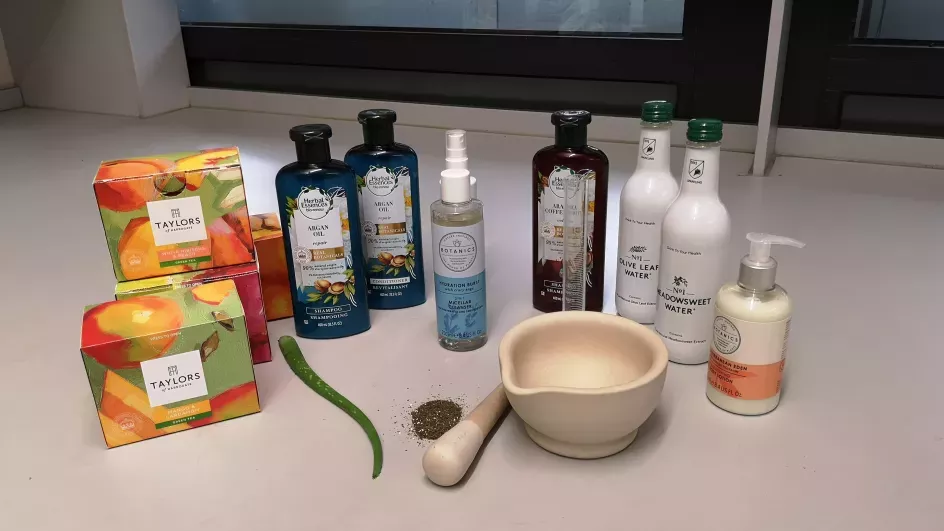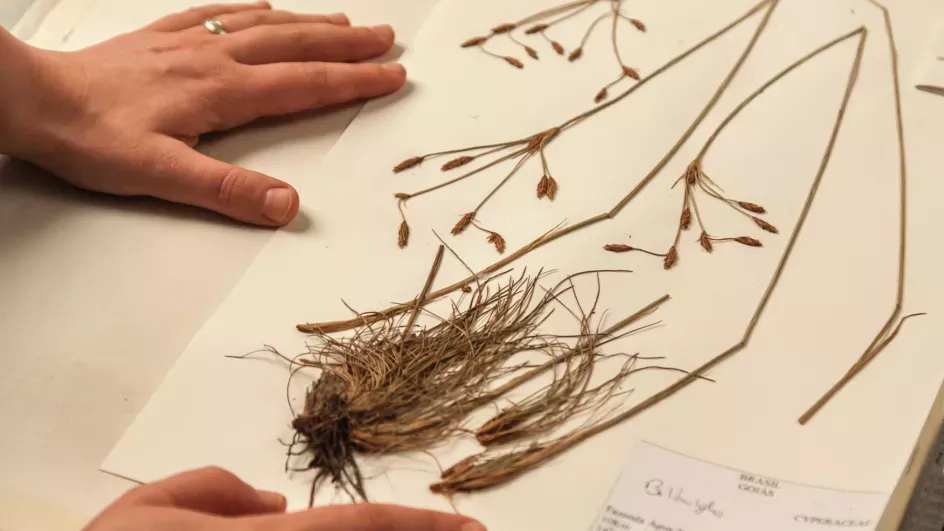Small Molecule Analysis Laboratory
This facility is equipped to analyse plant and fungal secondary metabolites.

Our Small Molecule Analysis Laboratory combines advanced mass spectrometry and other analytical instrumentation with on-site access to the small molecules contained within Kew’s collection of 8.5 million specimens of plants and fungi, together with recognised expertise in small molecule analysis.
Specifically, the laboratory is equipped to analyse and identify the secondary metabolites (such as flavonoids, terpenoids and alkaloids) that are produced by plants and fungi, in addition to their primary metabolites.
The laboratory supports all Kew projects requiring small molecule analyses, for example the lab assists the Biological Chemistry and In Vitro Studies team in the study of the nutritional and medicinal usage of naturally occurring plant and fungal chemicals, as well as contributing to Kew's Commercial Phytochemistry Unit for the authentication of botanical and fungal extracts used in industry.
Instruments
- HRAM LC-MS: Thermo Scientific Orbitrap Fusion
- LC-MS: Thermo Scientific LTQ Velos Pro
- TD-GC-MS: Agilent 5975C with Markes TD100
- NMR: Bruker Avance IIII HD 400 MHz
- FT-NIR/MIR: Perkin-Elmer Frontier/Spotlight 200
The laboratory has compiled an in-house library containing 2,000 MSn spectra of plant small molecules and holds an academic reference collection of 1,250 natural products.
Access to the laboratory is generally through a grant-funded project with a Kew co-PI that aligns with Kew’s strategic aims, although we have the ability to perform a limited number of analyses as a chargeable service.
Contact
For more information please contact our Laboratory manager Dr Geoffrey Kite.
Email: g.kite@kew.org
Selected methodological publications
Kite, G.C. (2018). Comment on “METLIN: A Technology Platform for Identifying Knowns and Unknowns” Analytical Chemistry 90: 13126–13127.
Michl, J., Kite, G.C., Wanke, S., Zierau, O., Vollmer, G., Neinhuis, C., Simmonds, M.S.J., Heinrich, M. (2016). LC-MS-and 1H NMR-based metabolomic analysis and in vitro toxicological assessment of 43 Aristolochia species. Journal of Natural Products 79: 30–37.
Kite, G.C., Rowe, E.R., Veitch, N.C., Turner, J.E., Dauncey, E.A. (2013). Generic detection of basic taxoids in wood of European Yew (Taxus baccata) by liquid chromatography–ion trap mass spectrometry. Journal of Chromatography B 915‒916: 21‒27.
Kite, G. (2013). Analysing glycosyl groups of saponins by serial mass spectrometry of sodiated molecules. Rapid Communications in Mass Spectrometry 27: 366‒368.
Kite, G.C. & Veitch, N.C. (2011). Identification of common glycosyl groups of flavonoid O-glycosides by serial mass spectrometry of sodiated species. Rapid Communications in Mass Spectrometry 25: 2579‒2590.
Kite, G.C., Green, P.W.C, Veitch, N.C, Groves, M.C., Gasson, P.E. & Simmonds, M.S.J. (2010). Dalnigrin, a neoflavonoid marker for the identification of Brazilian rosewood (Dalbergia nigra) in CITES enforcement. Phytochemistry 71: 1122‒1131.
Kite, G.C. & Veitch, N.C. (2009). Assigning glucose or galactose as the primary glycosidic sugar in 3-O-mono, di- and triglycosides of kaempferol using negative ion electrospray and serial mass spectrometry. Rapid Communications in Mass Spectrometry 23: 3125‒3132.
Discover more
-

Commercial Phytochemistry Unit
Providing unique expertise for the authentication of botanical and fungal extracts used in industry.
-

Magnolias, molecules and memories
Compounds new to science have been discovered in magnolia flowers thanks to Kew's Small Molecule Analysis facilities.
-

New skeleton found in Herbarium cupboard
A compound with a novel carbon skeleton was identified in a Kew Herbarium specimen.